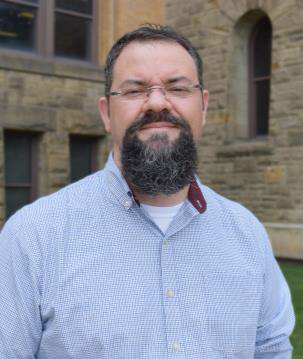- Speaker
- Prof. Claudio Verani
- Department of Chemistry, Wayne State University, USA
- Abstract
An iron-containing enzyme called Tyrosine Hydroxylase catalyzes the formation of neurotransmitters by means of electron-transfer mechanisms. Inspired by this enzyme the Verani group developed cutting-edge research at Wayne State University in Detroit, USA, to develop metal-containing surfactants (soaps) for applications in molecular electronics. The work involves synthesis, electrochemistry, spectroscopy, and DFT computational techniques to understand the behavior of such bioinspired environments. After a brief introduction to Wayne State University we will focus on the efforts to demonstrate how matching the energy of electrodes and surfactants will lead to molecules that act as diodes for current rectification, a process that fosters electronic communication and is fundamental in computing. We will then use an inverted argument to show how corrosion can be prevented by precluding electronic communication between the surface and the corroding media. We will finish by showing how computational chemistry can help in explaining mechanistic steps in catalytic water conversion to dihydrogen in similar bioinspired environments. Backgrounds on each of these topics will be provided.
- About the Speaker
Prof. Claudio Verani obtained his M.Sc. (1996, honors) in Chemistry at the Federal University of Santa Catarina in Brazil. He earned his PhD in 2000 working under the guidance of Prof. Karl Wieghardt at the Max-Planck Institute for Bioinorganic Chemistry in Germany, where he developed molecular models to understand the magnetism of multimetallic species. He also worked as a postdoctoral researcher from 2000 to 2002 in Prof. Ken Karlin’s group at the Johns Hopkins University in Baltimore, USA, modeling aspects of dioxygen activation by citochrome-c-oxidase. At Wayne State since 2002, Dr. Verani was promoted to associate professor in 2008 and to Professor of Chemistry in 2013. In July 2017 he was appointed Associate Dean for Research in the College of Liberal Arts and Sciences. His research interests involve (i) the merge of bioinspired coordination chemistry and surface science for applications in molecular electronics and (ii) the development of new Earth-abundant catalysts for water splitting. His group utilizes a multidisciplinary approach that includes both experimental and computational methods.
- Date&Time
- 2017-11-16 3:00 PM
- Location
- Room: Conference Room I




